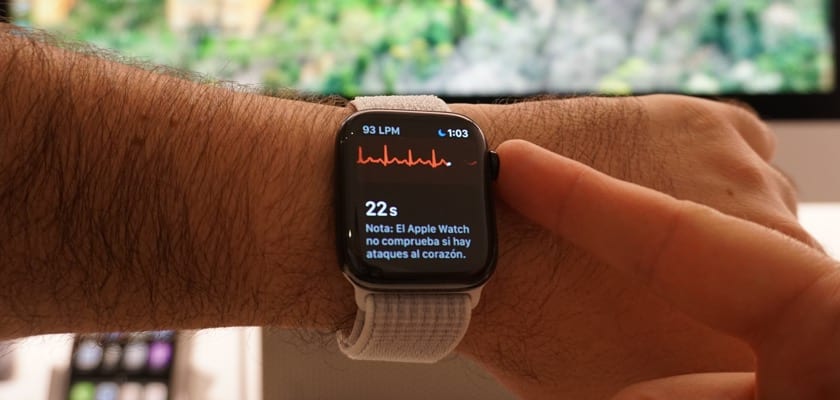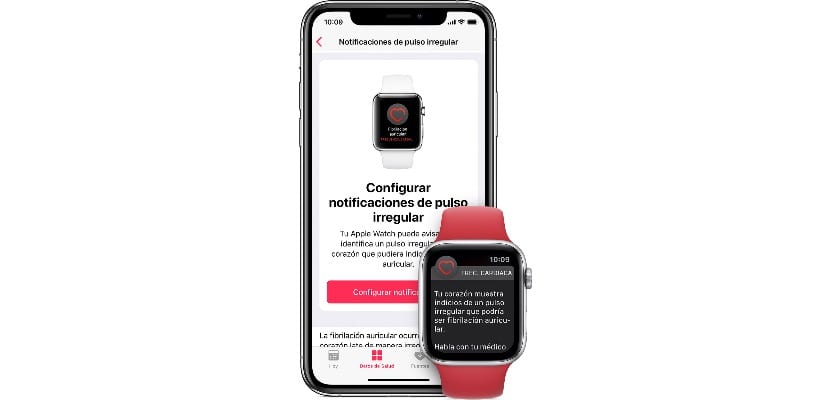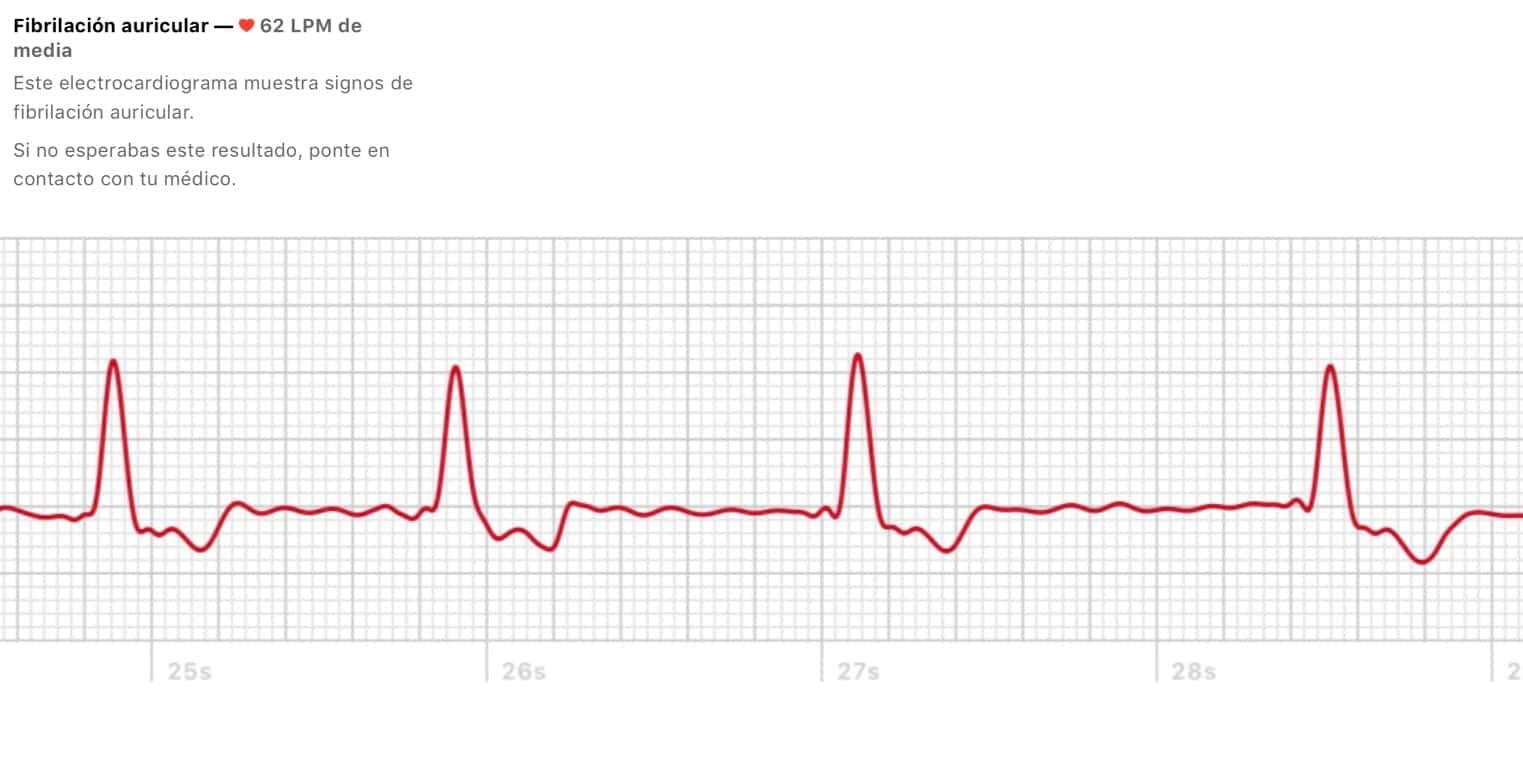
There is much talk about the new functionality of the Apple Watch that only a few weeks ago arrived in Spain and other European countries and that has already been the protagonist in several press headlines for how it has "saved" several lives in people who were unaware of having a heart problem. The Irregular Rhythm Notifications and the ECG are these two new functions that are sometimes confused and that many are not yet aware of.
What are Irregular Pace Notifications? What is the ECG? How do each of these functions work? Is your Apple Watch model compatible with any of them? How are the results interpreted? Here we will try explain everything you need to know to understand these functions well, know how to use them correctly and know how to interpret well the data they offer you.
What is atrial fibrillation
The heart normally beats rhythmically, but there are diseases that cause that rhythm to be lost, they are known as “arrhythmias”. There are many types of arrhythmias, but the most common is called "Atrial Fibrillation.". It is a type of arrhythmia that affects a very important part of the population, and one of its main problems is that in many cases it does not give any type of symptoms until complications appear, which are potentially serious. That is, some people have atrial fibrillation and do not know it, being detected only when complications appear.
For the diagnosis of atrial fibrillation, a study by your doctor is necessary, which should include a complete examination and an ECG (electrocardiogram). And this is where another of the problems of this disease that complicates its diagnosis appears: some people have it intermittently, they may have it at one point but not at another. This causes delays in their diagnosis and therefore in their treatment.

What are Irregular Pace Notifications
This function has been new to the Apple Watch for a few weeks, and is compatible with all models from Series 1, that is, you do not need to have the latest model to be able to use it. How do you activate it? You only need an Apple Watch Series 1 or later with watchOS 5.2 installed. Access the Watch application on your iPhone and go to "My Watch> Heart", where you will see the option "Irregular rhythm" to activate it.
It is an automatic function, you do not have to do anything, because the Apple Watch every certain period of time will capture your heart rate and see if it is rhythmic or not. In the event that it detects 5 rhythm anomalies in a period of no less than 65 minutes, you will receive a notification informing you of this fact. If you receive this notification, it is likely that you have an arrhythmia, and since Atrial Fibrillation is the most frequent arrhythmia, it is likely that this is the cause of it.. You should go to your doctor for a study to confirm or not the diagnosis.
This function is the one that has been evaluated in a study conducted jointly by Stanford University and Apple, with results that surprised many. This automatic heart rhythm monitoring notified 0,5% of the study participants, many of whom subsequently went to a doctor for their study, reaching the diagnosis of Atrial Fibrillation. But there are some data that are extracted from this study that are worth highlighting.
When the patient wore an Apple Watch and a patch that did an ECG simultaneously, if he received a notification of an irregular rhythm in 84% of cases, that ECG showed atrial fibrillation. However, those who wore only the Apple Watch and had the ECG done one week after receiving the notification, only 34% showed atrial fibrillation. This is explained because as we said at the beginning, Atrial Fibrillation can be intermittent, so when you receive the notification you may have it, but hours or days later it may have disappeared.
How the Apple Watch ECG works
The ECG function of the Apple Watch is a complement to the Irregular Rhythm Notifications. Together they become a more precise tool than It can be very helpful for your doctor in the diagnosis of a possible Atrial Fibrillation, and it can also be very useful for monitoring the diseaseAs it allows you to perform an ECG yourself at home, save it and show it to your doctor or even send it via email or instant message.
This function is not automatic, you must execute it yourself, contrary to what happens with Irregular Rhythm Notifications, and as we said, only the new Apple Watch Series 4 is capable of performing it as of watchOS 5.2. We do not yet have a study as large as the one we mentioned before, but there is a small clinical trial with 600 participants in which the efficacy of the Apple Watch ECG (a single lead) and a medical ECG (12 leads) was compared The study concluded that the ECG app of the Apple Watch showed a sensitivity of 98,3% when determining atrial fibrillation. It is a very small sample size but the results are promising.

This is where the data that we previously highlighted from the Stanford study become important: If the ECG was done at the same time that the notification was received, 84% of the time an Atrial Fibrillation was detected. If the ECG was delayed for several days after notification, only 34% of the time Atrial Fibrillation was detected. Therefore, if you have an Apple Watch Series 4 and you receive the Irregular Rhythm Notification, it is best to launch the ECG app of your Apple Watch, because the probability of detecting Atrial Fibrillation is higher.
Always check with your doctor
Neither the Irregular Rhythm Notifications nor the ECG function of the Apple Watch are intended to replace your doctor, Nothing further from reality. If you have any symptoms suggestive of heart disease you should see your doctor even if your Apple Watch does not detect anything, and if you do not notice symptoms but the notifications or the ECG tell you that something is not normal, you should also go to your doctor to confirm if that problem is real or not.
Negatively evaluating these Apple Watch functions because they need confirmation from a doctor is a mistake, because it is not their purpose. In Europe about 11 million people have Atrial Fibrillation, to which we must add those who are not yet diagnosed because they have not had any symptoms yet. The purpose of the Apple Watch, the Irregular Rhythm Notifications and the ECG function is to reduce the number of people who do not yet have the diagnosis and thus be able to treat them before a serious complication appears. It can also help to monitor people who already have the diagnosis made, offering very useful information to their doctor.